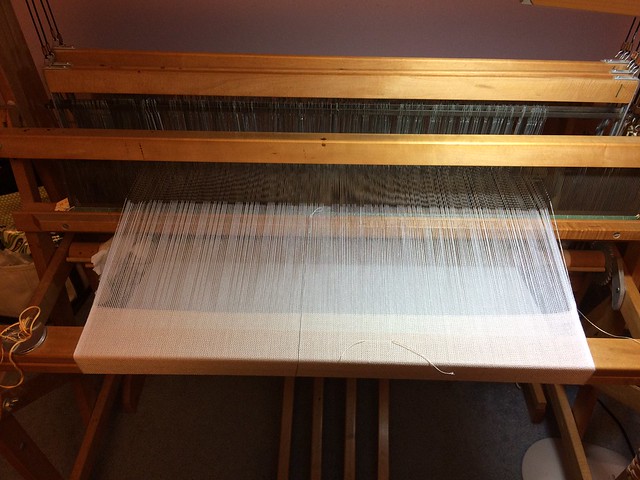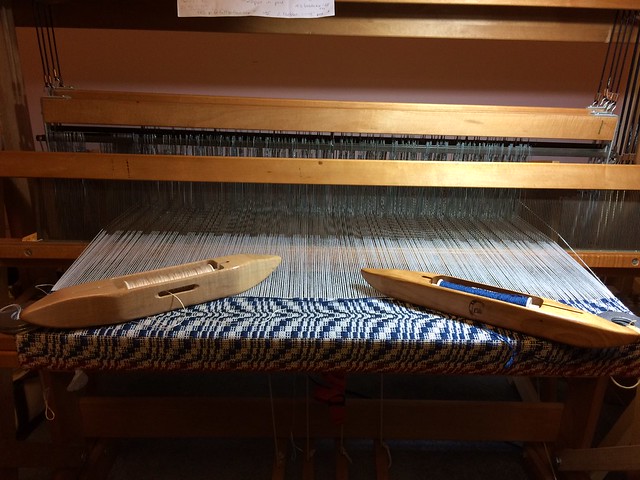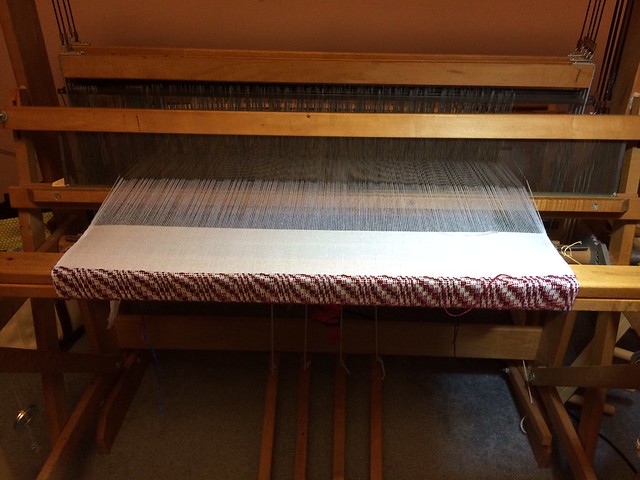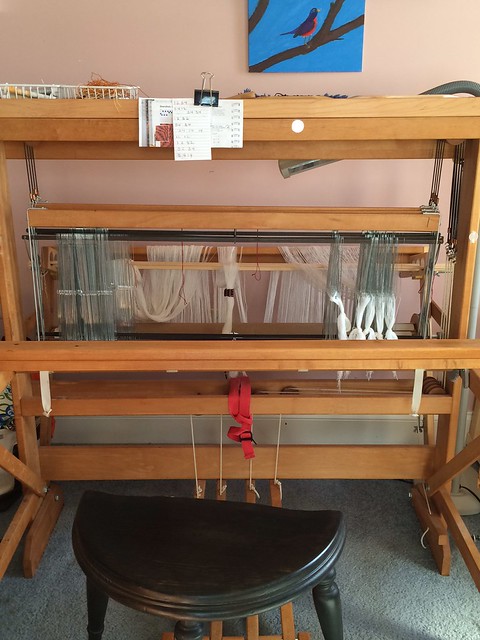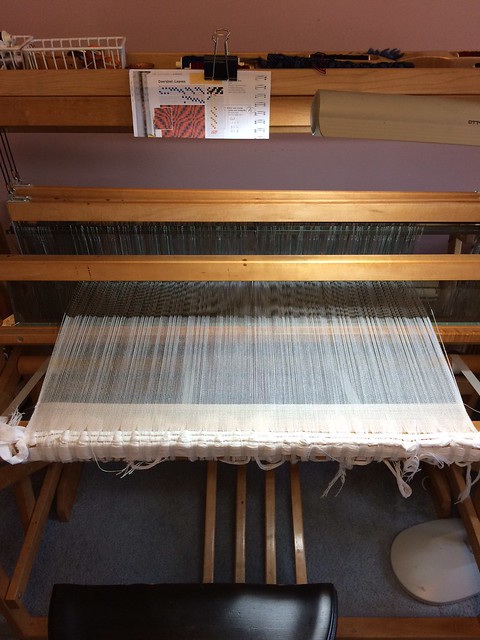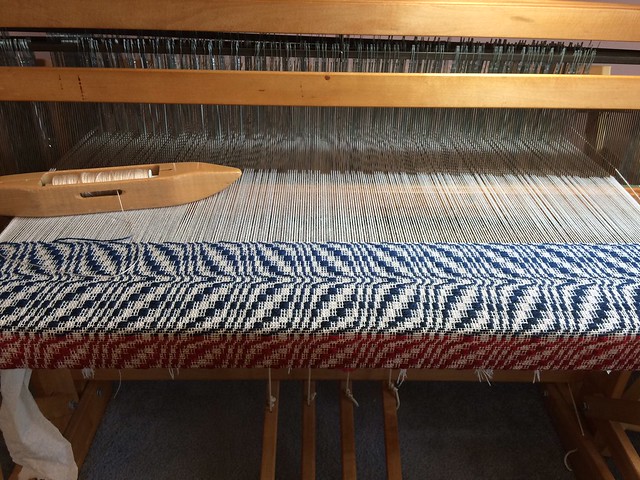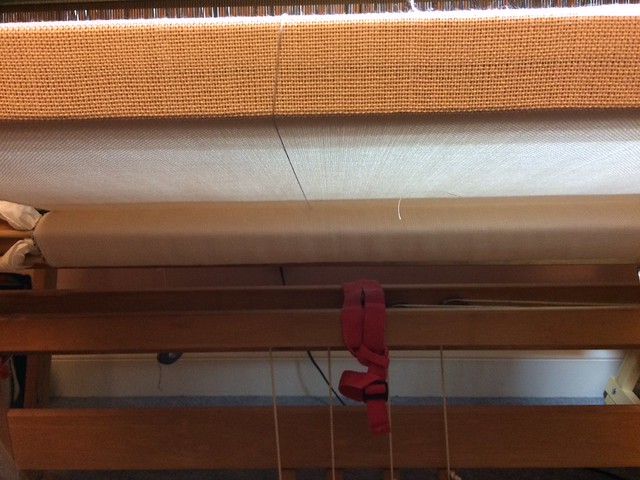See how quickly I came back? It hasn't even been two weeks, and here I am again to thrill you with my tales of derring-do.
First up is an epic battle between a wanna-be-weaver and her loom.
It all started with the idea of making my son a tallit for his bar mitzvah. I've made three of these things already, so it is not exactly the craziest idea I've ever come up with (although with two weeks left to go and no tallit on the loom, I might be forced to amend that position).
I decided to go with a fine wool
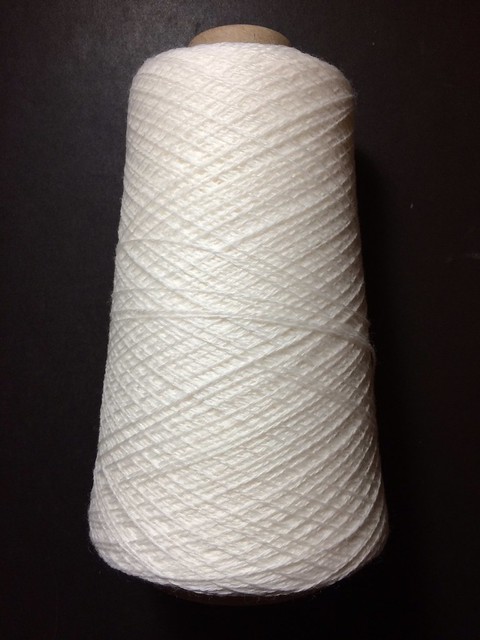
and a long color change knitting yarn
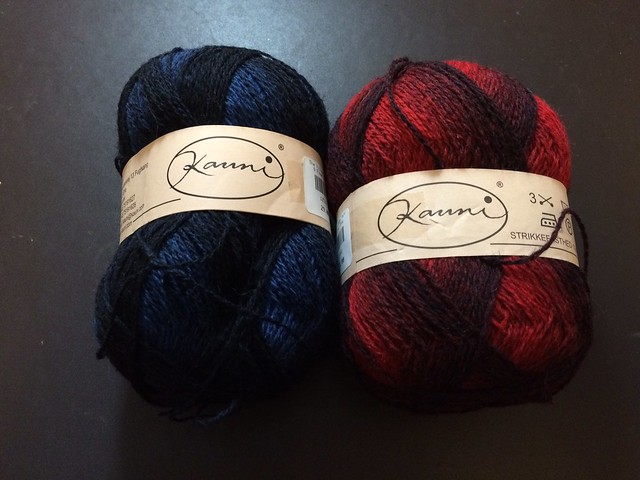
and a new-to-me structure called overshot, in which you basically weave a background cloth and a design at the same time.
Because both the materials and the structure were new to me, I did something wild and crazy: I wove a sampler first. Actually, I wove two samplers. The first was dedicated to learning the basics of overshot so that I wouldn't eff the tallit up and the second was dedicated to testing the intended materials and colors so that I still wouldn't eff the tallit up.
Really, there is nothing crazy about this. It is a completely rational way to design something and I learned all sorts of useful stuff. What's crazy about weaving two samplers before weaving the tallit is that I am the world's most procrastinating-est wanna-be-weaver, and even though I started the first sampler in way back in the spring, I have still managed to get myself within two weeks of the absolute--drop dead--no possibility of an extension last date on which the tallit must be done and there is no tallit on my loom.
I told you it was getting exciting around here.
Here is what learned from the sampler.
1. I like the general design. Here you see it in white, but on the tallit it will be blue and red.
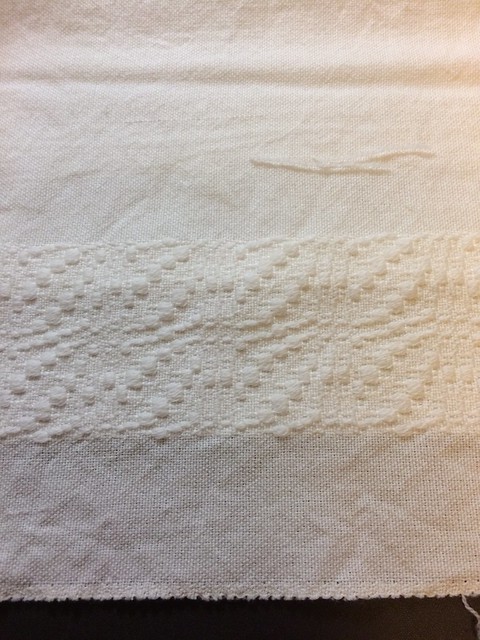
2. Did I mention white? Not surprisingly, given the original cone of fine merino wool, the sample background fabric was VERY WHITE. Blindingly so, in a way that made me fear for the safety of the congregation on the big day.
3. And so we sampled some more. I pulled out some yarn left from the first tallit I made and tried again.
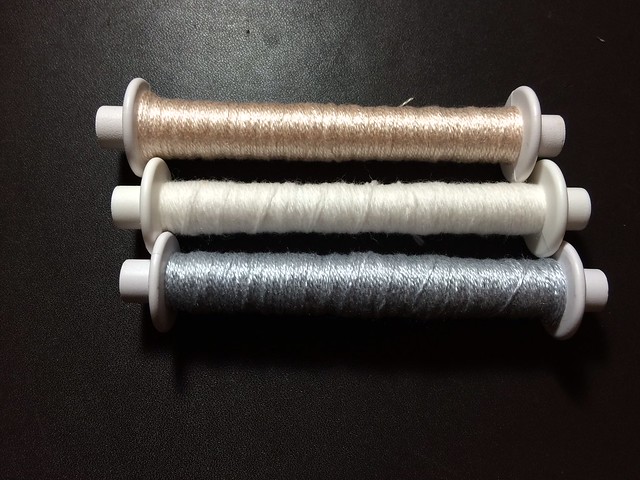
4. This was the Goldilocks part of the sampler. The middle stripe is TOO WHITE. The bottom section is too grey (I really didn't like what the silver thread did to the red and blue design). But the top section is just right. It has a slight warm glow, it plays nicely with the red and blue yarns, and, as an added bonus, because it is a tencel yarn, it adds a little bit of drape to the fabric. All good.
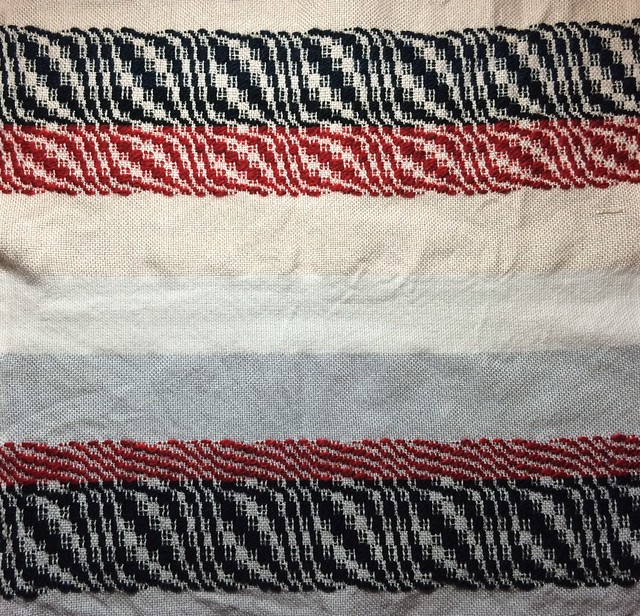
5. Or was it? Tencel is a plant-derived fiber and here I was mixing it with wool. There is a point of Jewish law, which comes up NEVER in a Reformed congregation like mine, that forbids the mixing of linen and wool in a garment, and I didn't know whether that law meant, by extrapolation, that it would be unkosher to mix wool with other plant-based fibers. I have gone most of my life without any concern for this issue, but it seemed like a major cheat to make my kid a religious garment that violated religious law, and, for the first time in my life, I had to go get an opinion from the Rabbi to make sure I was not on the verge of making my son a Bacon Tallit. Not to worry, said the Rabbi. This is a requirement that comes with no explanation or reason (there are a bunch of Jewish laws that are like that) and, although I might be able to find a different opinion if I searched long enough, according to his research the provision was limited in application to the blending of linen and wool.
Good enough for me.
And now we're back to my usual set of problems: so much work to do, so little time. Here is what my loom looks like (so, so empty looking!!! I think I'm starting to panic) and you can imagine the task in front of me as I thread 558 bits of string through all that metal and begin speed-weaving.

The good news is that, like painting a room, all the actual labor is in the preparation. Once that is done, the weaving can go very quickly, assuming I actually work on it. So, into the fray I go!
